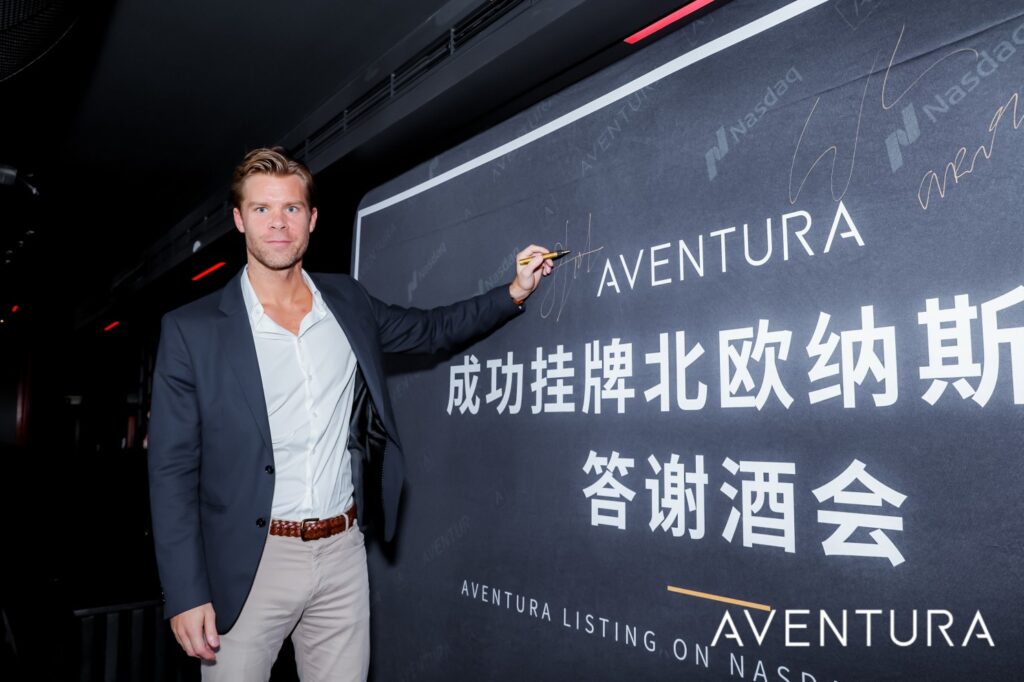
This week, we’re excited to speak with Gustav Astrom, an already-experienced entrepreneur embarking on a search fund journey in Southeast Asia. With 18 years of experience building businesses in China, Gustav brings a unique perspective to the search fund model in emerging markets. Now based in Kuala Lumpur, he’s set his sights on acquiring and growing SMEs in Malaysia and Singapore through his search fund Seastar Partners. His deep understanding of the region’s economic potential, combined with his cross-cultural expertise, gives him a significant edge in this dynamic landscape.
MC: Can you tell us about your professional background and what led you to search funds?
Gustav: I’m originally from Sweden but have had quite an international upbringing. I’ve always wanted to be an entrepreneur, inspired by my father who runs a small business in clinical research. I started my first venture in high school – a digital out-of-home media concept – and have been building businesses ever since.
After studying in Italy and Australia, I moved to China in 2005 at age 24. Over the next 18 years, I started or co-founded about six to eight companies there, ranging from consulting firms to e-commerce operations. My last venture was a market expansion group helping international brands enter China, which we sold in 2023.
I discovered the search fund model about 10 months ago through a friend in the US. It really resonated with where I am in my career and life. After years of starting businesses from scratch, I was looking for a lower-risk approach that still allowed me to be entrepreneurial.
MC: You’ve chosen to focus your search on Malaysia and Singapore. What attracted you to these markets?
Gustav: I’m very bullish on Southeast Asia as a region for many reasons – demographics, economic activity, and the overall sense of growth. While countries like Vietnam and Indonesia are getting a lot of attention, I find Malaysia particularly appealing as a slightly overlooked market.
Malaysia is the most mature and stable market in the region, with high transparency, a common law system, and English as a second language. It’s an ideal location for exports, with low manufacturing costs, high skills, fantastic infrastructure, and free trade agreements with most countries worldwide.
Singapore will be more of an opportunistic search for me. It has no shortage of great companies and talented entrepreneurs, but it’s also more competitive with higher valuations.
MC: What types of businesses are you targeting in your search?
Gustav: I’m casting a fairly wide net initially, but focusing on B2B businesses with strong recurring revenues. This could include rental businesses, facility management, or canteen management – sectors that are non-cyclical and have good returning revenue.
I’m also interested in companies with hidden export potential. Many Malaysian businesses produce great products but only sell locally. There’s an opportunity to take these companies global, leveraging Malaysia’s export-friendly environment.
MC: How does the availability of debt financing differ in Southeast Asia compared to more established search fund markets?
Gustav: Debt is generally harder to come by in this region. Traditional banks are not very familiar with search fund-style loans. Singapore probably offers the best chance of securing debt financing in Southeast Asia, and there are some private lenders as well.
This means we can’t factor in a large portion of debt in our calculations. To compensate, we need to target faster growth rates. It’s a different dynamic – less debt available, but more opportunities for rapid expansion due to the growing market.
MC: What exit strategies are you considering for a potential acquisition?
Gustav: The M&A and private equity industries in Malaysia have grown significantly over the past decade, but they’re still not at the level you’d find in Europe or the US. This means we need to be very mindful of the exit strategy from the beginning when evaluating businesses.
There are regional private equity firms active in buying companies in Malaysia, and larger international players looking to enter the market. It’s also fair to assume that the M&A landscape will continue to develop over the next 7-10 years, potentially offering more exit opportunities by the time we’re ready to sell.
MC: How has your fundraising experience been so far? Are investors open to the search fund opportunity in Southeast Asia?
Gustav: Fundraising is definitely a challenge for search funds in Asia, as investors are not very familiar with this model. It takes longer to educate potential backers and build trust, especially since there aren’t many successful cases to point to in the region yet.
I’m aiming for a cap table with about 80% international search fund investors and 20% strategic local investors. The discussions are progressing, but it’s more time-consuming than in established markets. From the international investor perspective, there’s only a small subset of maybe 10-15 firms that are very active in global search fund investments, so that limits our pool of potential backers.
MC: What unique challenges and opportunities do you see for search funds in Southeast Asia compared to more established markets?
Gustav: One key difference is the growth expectations. In a developed economy growing at 2%, you might target 6-8% growth for your business. In Southeast Asia, where economies are growing at 8%, we need to aim for at least 12-15% annual growth to justify the investment.
Another challenge is the lack of familiarity with the search fund model. We need to educate both investors and potential sellers about how this works. On the flip side, there’s less competition in our target market size, and many businesses haven’t yet professionalized their operations or expanded beyond local markets.
The opportunity to add value through better management practices, technology adoption, and regional or global expansion is significant. Also, with Malaysia’s currency currently at a low point, it’s a beneficial time for foreign investors to enter the market.
MC: How do you see the search fund ecosystem developing in Southeast Asia over the next few years?
Gustav: I’m getting calls every week from searchers somewhere in Asia who are interested in the model. The searcher side is growing rapidly, but there’s a lag on the investor side. As general awareness of search funds increases, I expect this gap to close.
Looking ahead, I’m interested in not just investing in search funds, but potentially doing something more structural in the Southeast Asia region to support the lower segment of the market – the SMEs. There’s a lot of interest from investors in Singapore and Malaysia in this space, and I believe there’s significant untapped potential.
MC: Any final advice for entrepreneurs considering a search fund in emerging markets?
Gustav: Be prepared for a longer education process with both investors and sellers. Leverage your unique experiences and cultural understanding – in my case, my years in China helped me relate to the Chinese-Malaysian business community, which owns about 60% of SMEs in Malaysia.
Stay open to opportunities that might not fit the traditional search fund mould but make sense for your specific market. And most importantly, be patient. Building relationships and trust takes time in these markets, but the potential rewards are substantial.

